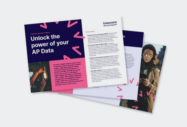SAP Simulation
Filter By
Browse By
- SAP Analytics and AI
- SAP Application Development and Integration
- All SAP Application Development and Integration
- SAP ABAP
- SAP ABAP Development Tools
- SAP ABAP Test Cockpit
- SAP API Management
- SAP BAPI
- SAP Basis
- SAP BRF
- SAP Business Application Studio
- SAP CMS
- SAP Design Studio
- SAP Development Tools
- SAP DevOps
- SAP EAI
- SAP EDI
- SAP Extension Suite
- SAP Fiori
- SAP Fiori Elements
- SAP Integration Suite
- SAP Low Code Application Development
- SAP Low Code Automation
- SAP Netweaver
- SAP Release Management
- SAP UI5
- SAP Web Application Server
- SAP Web IDE
- SAP Business Process Management
- SAP Center of Excellence
- SAP CIO
- SAP Customer Experience
- SAP Data and Data Management
- All SAP Data and Data Management
- SAP BW
- SAP BW/4HANA
- SAP Crystal Reports
- SAP Data Archiving
- SAP Data Center
- SAP Data Governance
- SAP Data Integration
- SAP Data Migration
- SAP Data Quality
- SAP Data Services
- SAP Data Strategy
- SAP Data Visualization
- SAP Data Warehouse Cloud
- SAP DMS
- SAP Document Control
- SAP EIM
- SAP ETL
- SAP ETL Tools
- SAP HANA
- SAP HANA Administration
- SAP HANA Deployment Infrastructure
- SAP HANA Studio
- SAP Master Data
- SAP Master Data Governance
- SAP MDM
- SAP Enterprise Architect
- SAP Enterprise Asset Management
- SAP ERP
- SAP Finance
- All SAP Finance
- SAP Accounting
- SAP AR AP
- SAP Asset Accounting
- SAP Billing Systems
- SAP BPC
- SAP BRIM
- SAP Cash Management
- SAP Central Finance
- SAP Controlling
- SAP COPA
- SAP Cost Center Accounting
- SAP Currency Risk
- SAP e-invoicing
- SAP FICO
- SAP Finance Automation
- SAP Advanced Financial Closing
- SAP Financial Consolidation
- SAP Financial Planning
- SAP FX Risk
- SAP General Ledger
- SAP Global Tax Management
- SAP Hyperion
- SAP Order to Cash
- SAP Payment Processing
- SAP Profitability Analysis
- SAP Rebate Management
- SAP S/4HANA Finance
- SAP SWIFT Compliance
- SAP Treasury Management
- SAP Universal Journal
- SAP Governance Risk and Compliance
- SAP Human Capital Management
- SAP Intelligent Technologies
- SAP Platform and Technology
- All SAP Platform and Technology
- SAP Business Technology Platform
- SAP Cloud
- SAP Cloud Connector
- SAP Cloud Integration Platform
- SAP Cloud Migration
- SAP Cloud Platform
- SAP Cloud Providers
- SAP Cloud Strategy
- SAP Digital Signature
- SAP Container Platform
- SAP HANA Enterprise Cloud
- SAP Digital Asset Management
- SAP Smart Forms
- SAP HEC
- SAP Digital Integration Hub
- SAP Hyperscalers
- SAP Infrastructure
- SAP Messaging
- SAP Quality and Testing
- SAP Security
- SAP Spend Management
- SAP Supply Chain Management
- All SAP Supply Chain Management
- SAP APO
- SAP Asset Management
- SAP Business Network
- SAP Digital Manufacturing Cloud
- SAP Digital Twin
- SAP EWM
- SAP IBP
- SAP Inventory Management
- SAP Label Printing
- SAP Logistics
- SAP Manufacturing
- SAP Manufacturing Automation
- SAP MES
- SAP MII
- SAP MM
- SAP MRO
- SAP MRP
- SAP Order Management
- SAP Plant Maintenance
- SAP PLM
- SAP Production Planning
- SAP S&OP
- SAP SD
- SAP SPM
- SAP Supply Chain Planning
- SAP Track and Trace
- SAP Transportation Management
- SAP System Administration
What is Simulation?
Simulation modeling is the capability to leverage analytics and digital tools to help answer “what-if” questions in the business context. These tools help you evaluate the impact of business decisions on your business processes and may help you select the most optimal decision. An example may be manufacturing scheduling. A simulation modeling tool can help you evaluate the impact of various scheduling approaches on manufacturing cycle time.
What is Simulation?
Simulation modeling is the capability to leverage analytics and digital tools to help answer “what-if” questions in the business context. These tools help you evaluate the impact of business decisions on your business processes and may help you select the most optimal decision. An example may be manufacturing scheduling. A simulation modeling tool can help you evaluate the impact of various scheduling approaches on manufacturing cycle time.
Simulation tools often help evaluate recommendations from other analytics approaches like optimization, without implementing those recommendations in the real-world. The three most widely used process simulation modeling types are:
- System dynamics
- Discrete event modeling
- Agent-based modeling
Simulation Technologies Available in the SAP World
Process simulation modeling tools have been leveraged extensively in SAP technology ecosystem. An example is SIMUL8, which is a flow simulation program that can help you visualize your process flows, understand the bottlenecks, and evaluate the impact of change in parameters on the process. As far as non-SAP process simulation modeling solutions are concerned, all leading simulation software tools like AnyLogic and Simio integrate well with SAP environments.
Key Considerations for SAPinsiders
Understand the methods and process alignment. The choice of method that should be used is based on the system being modeled and the purpose of the model. It is therefore critical to understand which specific simulation method will be a good fit. This is important from the perspective of tools being leveraged since some tools have more coverage and use cases in certain methods.
Define the level of abstraction of the process model. This is where you define how detailed your model needs to be. Remember that this depends on the modeling objective. As an example, if you are trying to gain an understanding of the cycle time of a product flow across the supply chain, you do not need to model individual processes within a manufacturing location. But if your simulation model is going to focus on the impact of changeover time on a manufacturing line, you may have to model the entire line flow in detail.
Think about integration with tools like business process intelligence (BPI). Note that the majority of BPI tools already do a good job of capturing process flow and building a model from that flow. Not all of them, however, offer simulation capabilities and those that do may not have the features a standalone pure simulation tool or module may offer. By strategically integrating a simulation tool with a BPI tool, you can create a solution that takes your process management capabilities even further.
420 results
-

Catalyzing Innovation in Life Sciences with SAP & NTT DATA Business Solutions
Reading time: 4 mins
The life sciences sector is rapidly digitalizing to enhance efficiency and patient outcomes while facing challenges such as data consolidation, supply chain resilience, privacy concerns, and the integration of advanced technologies, necessitating strategic partnerships and strong governance to overcome these hurdles.
-

The Future of Corporate Learning: How Companies Can Optimize Training Strategies
Published: 02/26/2025
Reading time: 4 mins
As career paths become increasingly unique, we hear from SAP about the need for companies to adopt a flexible approach to employee training.
-

How AI Empowers Businesses and Employees for the Future
Published: 03/04/2025
Reading time: 4 mins
In a rapidly evolving business landscape, the integration of AI presents opportunities and challenges for organizations.
-
-

Rumble in the Jungle Round 1: Using OpenAI ChatGPT to Automate SAP SAC Script Code
Reading time: 15 mins
The article discusses the innovative advancements in AI and machine learning, particularly how they interact with SAP systems, highlighting SAP’s cautious yet essential approach to ensure security while integrating AI tools like chatbots for tasks such as coding, and the necessity of human oversight in validating AI-generated outputs through practical testing.
-

Optimizing SAP Testing with AI-Driven Chatbots
Reading time: 2 mins
The integration of AI and chatbot technologies in SAP testing significantly enhances efficiency and reliability by enabling real-time validation, reducing dependency on specialized teams, and streamlining testing processes, ultimately leading to improved collaboration, faster cycles, and cost savings.
-

Why SAP S/4HANA Migration is the Perfect Time to Rethink Your Pricing Strategy
Reading time: 4 mins
As companies migrate to SAP S/4HANA, they have a unique chance to modernize and optimize their pricing strategies with Zilliant’s AI-powered solutions, ensuring agility and enhanced profitability while transitioning away from outdated ERP models.
-

4flow Appoints Greg Toornman to Accelerate Global Supply Chain Innovation
Reading time: 2 mins
4flow has appointed Greg Toornman, a seasoned supply chain leader with over 20 years of experience, as a strategic advisor to bolster its SAP digital supply chain practice and enhance its influence in North America, leveraging his expertise to innovate and optimize logistics operations.
-
-

Basware Insights
Reading time: 1 mins
Unlock the Power of Your AP Data with Basware Insights Basware Insights enables organizations to turn their AP data into actionable insights, enhancing decision-making and financial results. It offers real-time visibility into spending and invoice processes, aiding strategic planning. With flexible dashboards and generative AI capabilities, Basware Insights promotes touchless invoice processing and a data-centric…
-

How SAP Users Can Build Tariff-Proof Supply Chains with Real-Time Data and Smart Planning
Reading time: 4 mins
In an era of unpredictable tariff increases, SAP users can leverage tools like S/4HANA, IBP, and Ariba, along with mobile barcoding, to transform supply chain disruptions into opportunities for resilience, agility, and strategic advantage.
-

Chemicals Industry Transformation: SAP’s Foundation for Strategic Growth – Part 1
Reading time: 3 mins
The chemicals industry faces challenges in cost management and regulatory compliance, which can be addressed through the implementation of SAP solutions by partners like NTT DATA Business Solutions, enabling enhanced operational efficiency, strategic growth, and seamless data migration.
Become a Member
Unlimited access to thousands of resources for SAP-specific expertise that can only be found here.
Become a Partner
Access exclusive SAP insights, expert marketing strategies, and high-value services including research reports, webinars, and buyers' guides, all designed to boost your campaign ROI by up to 50% within the SAP ecosystem.
Upcoming Events
-

Mastering SAP Collaborate, an SAP TechEd on Tour event
November 12 - 14, 2025
Sydney, New South Wales
Australia
View Event
Related Vendors
Your request has been successfully sent

